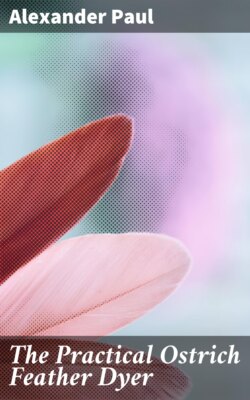Читать книгу The Practical Ostrich Feather Dyer - Alexander Bartlett Paul - Страница 9
На сайте Литреса книга снята с продажи.
LOGWOOD.
ОглавлениеLogwood is met with in commerce in the shape of large blocks, averaging about four hundred pounds each in weight. On the surface the wood is a dirty deep brown red, but within, where it has not come in contact with the atmosphere, its color is much brighter. The tree is a native of South America. It has been known and used ever since a short period after the discovery of America. During the twenty-third year of the reign of Queen Elizabeth an act of Parliament was passed, forbidding its use as a dyestuff, because it did not yield fast colors. This act was repealed, however, by an Order in Council of Charles II., which proceeds to set forth that great improvements have been made as regards the obtaining of fast colors from logwood. The following are the chief varieties of logwood, distinguished by names derived from the localities of exportation: Yucatan, Laguna, Domingo, Monte Christo, Fort Liberte, Jamaica, etc.
Logwood is to-day one of our most important dyewoods, as indeed it enters in feather dyeing into all of the dark or staple colors, such as black, navy blue, brown, green, garnet, etc. To extract the substance requires considerable boiling, especially if used in the form of chips; if it is used ground, which is by far preferable to chips in feather dyeing, it requires much less boiling to extract the substance. The dyer will often find logwood, that, although purchased under the name of a most excellent brand, will be far inferior to what he has been using, in which case it is well to look for an adulteration of some sort, which it is not at all easy to detect, only when it does not produce the desired result.
